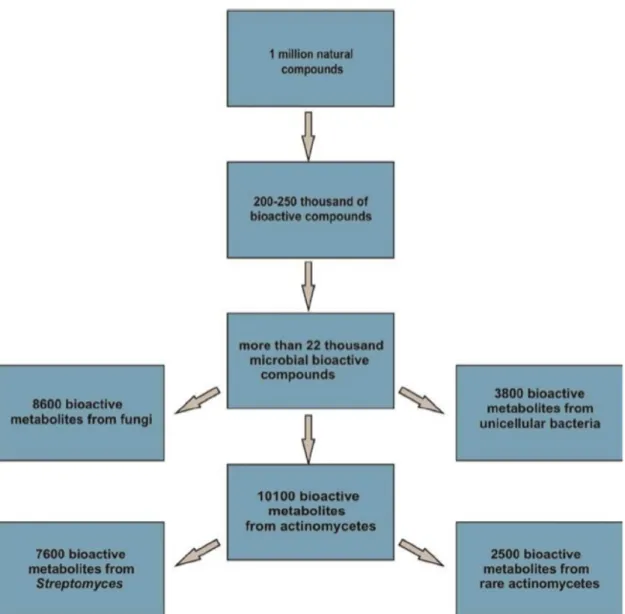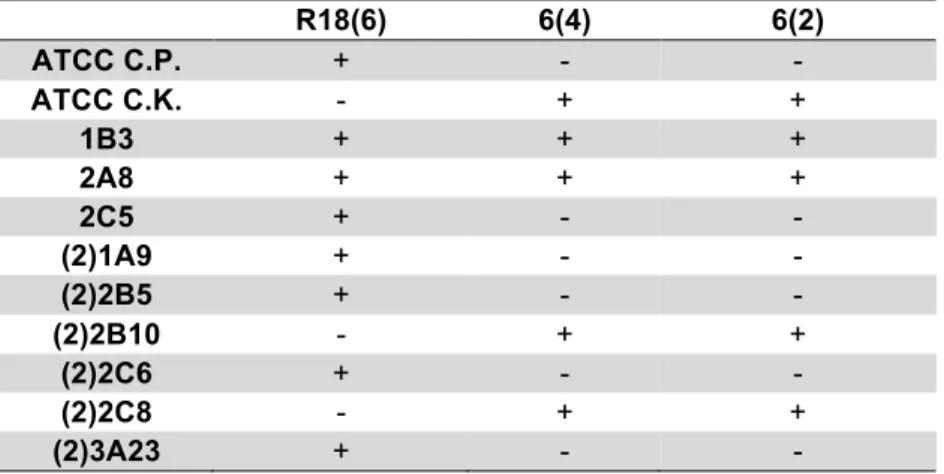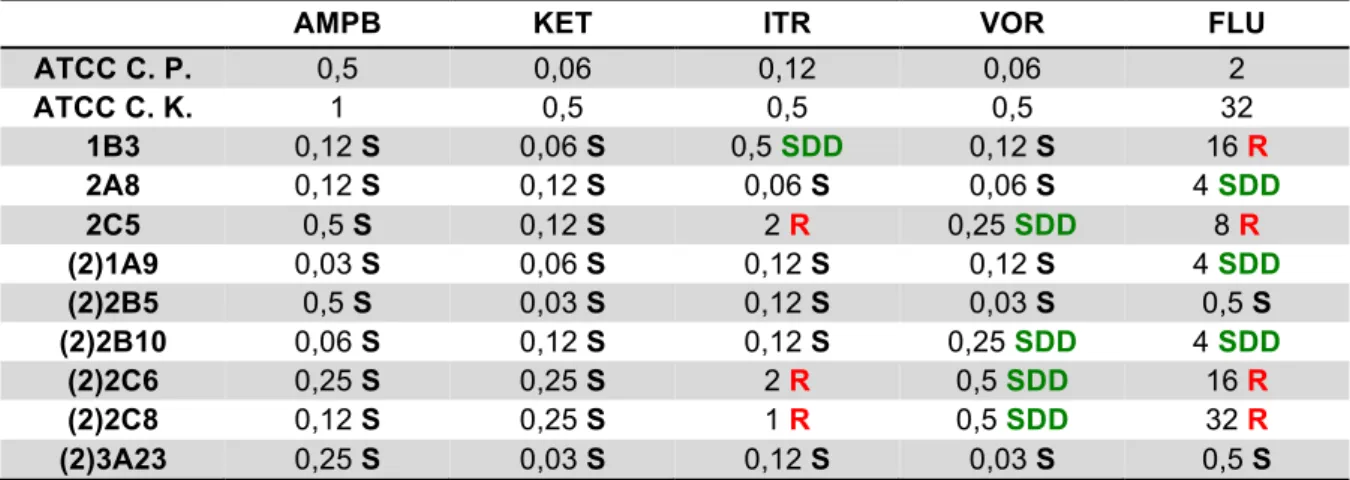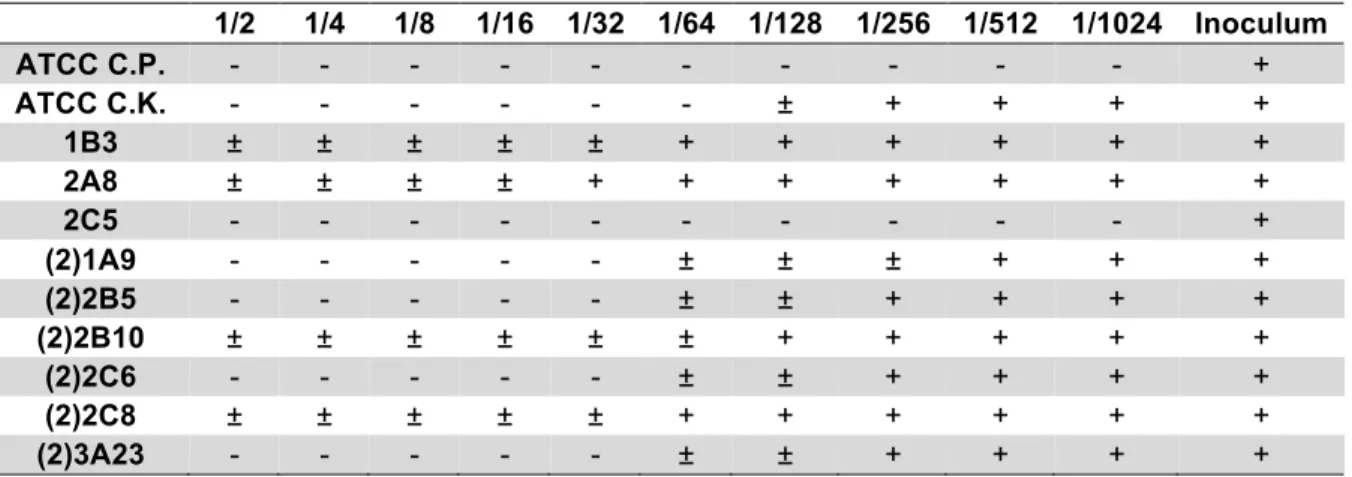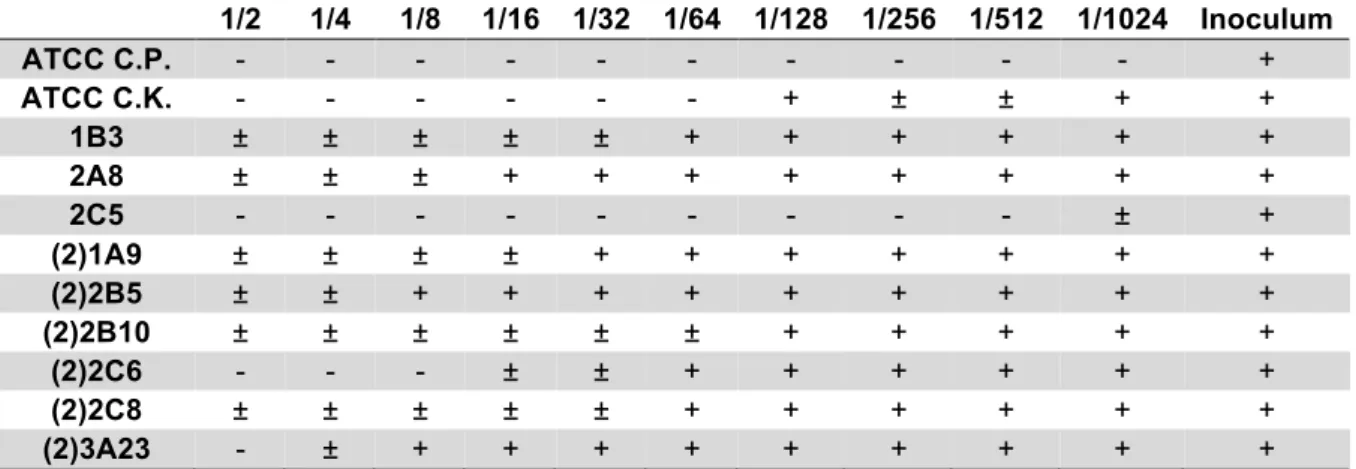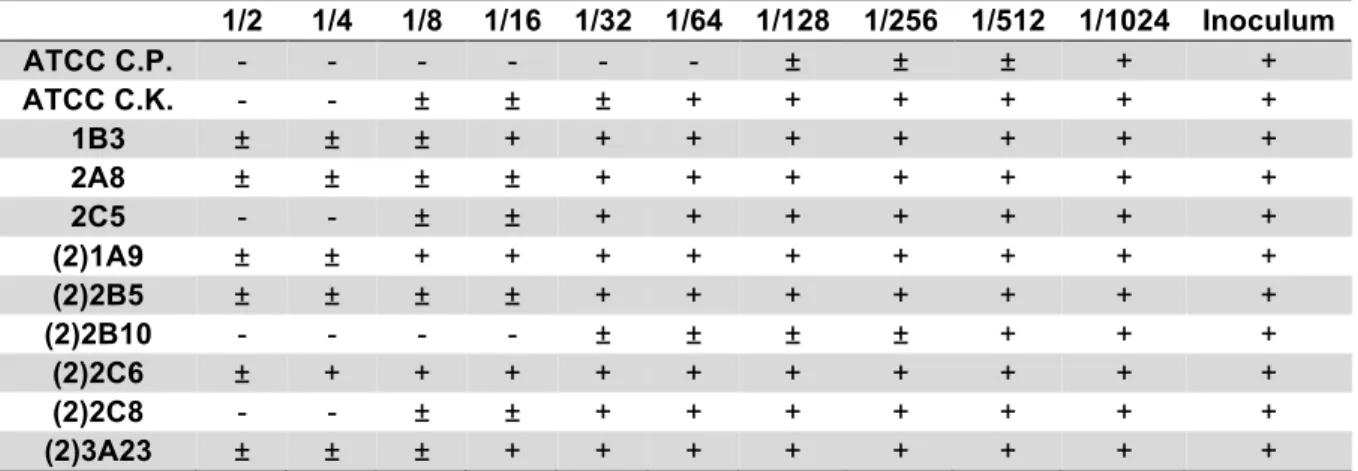L EVEDURAS A QUÁTICAS
G ÊNERO C ANDIDA
Estas infecções são difíceis de tratar porque os fungos, tal como as células humanas, são eucarióticos (Yamaguchi et al., 2007). Eles tendem a invadir e causar doenças quando há um desequilíbrio no corpo humano (Ballal & Vinitha, 2009; Miceli et al., 2011). Os isolados de Candida apresentam inúmeros fatores de virulência, como a formação de biofilmes e a produção de enzimas extracelulares como proteinase e fosfolipase.
Segundo Cury et al. 2007) isolados oportunistas de Candida apresentam diferentes perfis de suscetibilidade antifúngica dependendo da espécie a que pertencem, e também diferem entre isolados da mesma espécie. A crescente ocorrência de cepas clínicas multirresistentes, além de falhas no tratamento de infecções (resultantes do perfil de resistência dos isolados), exige a descoberta de novos metabólitos com atividade antimicrobiana e potencial para uso clínico. . Portanto, atualmente são realizados cada vez mais estudos sobre a atividade biológica de metabólitos secundários, que se tornaram cada vez mais necessários (Solecka et al., 2012).
M ETABÓLITOS S ECUNDÁRIOS
O uso de técnicas moleculares aumenta a eficiência com que um grupo de microrganismos desejados pode ser identificado em amostras ambientais e isolado para estudos (Donadio et al., 2002). Os habitats terrestres são a principal fonte de microrganismos produtores de metabólitos secundários, mas os habitats marinhos têm se mostrado uma fonte alternativa promissora, proporcionando a identificação de diversos metabólitos com estruturas diferenciadas (Bervanakis, 2008). Os métodos genéticos e as técnicas de triagem tornaram possível descrever mais de um milhão de compostos naturais.
Dentre os metabólitos, os actinomicetos são produzidos por espécies do gênero Streptomyces (Solecka et al., 2012).
A CTINOMICETOS
Possuem propriedades fisiológicas e metabólicas distintas, como a produção de enzimas extracelulares e a formação de uma ampla variedade de metabólitos secundários, muitos dos quais são antibióticos potentes (Ventura et al., 2007; Genilloud et al., 2011; George et al., 2011; George et al., 2007; Genilloud et al., 2011; George et al. ..., 2012; Goodfellow & Fiedler, 2013). Ocorrem em diversos ambientes, tanto terrestres quanto aquáticos, principalmente no solo, onde são de grande importância na reciclagem de biomateriais por meio da decomposição e formação de húmus (Ventura et al., 2007). Os antibióticos derivados de actinomicetos em uso atualmente incluem atividade antibacteriana, antifúngica, anticarcinogênica, antimalárica e anti-inflamatória, e a maioria dos metabólitos secundários que deram origem a esses medicamentos foram obtidos apenas de espécies pertencentes ao gênero Streptomyces (Saxena et al., 2013). ).
G ÊNERO S TREPTOMYCES
Destacam-se também como a maior fonte de antibióticos naturais e outros metabólitos bioativos secundários, razão pela qual são de grande importância para a medicina e para a indústria farmacêutica (Ventura et al., 2008). Os produtos da fermentação de Streptomyces são uma rica fonte de compostos que podem ser utilizados como novos medicamentos com potencial antimicrobiano (Solecka et al., 2012).
O BJETIVO G ERAL
O BJETIVOS E SPECÍFICOS
The diffusion method in agar wells was carried out and the inhibition halos formed in the growth of the yeast were measured. Human activities have led to soil erosion and high residue concentrations in rivers, and these residues can end up changing the water composition, leading to harmful effects on the organisms that live in these areas as well as on the human body (Blume et al. 2010). However, in recent years the focus on them has increased and their presence is now considered a chronic problem in water distribution systems (Hageskal et al. 2009).
Yeast communities in aquatic environments are very diverse and many of the species found are opportunistic pathogens. Yeasts respond quickly to organic pollution and some of them can be used as indicators of nutrient enrichment in water (Brandão et al. 2010). Several human-associated yeast strains were found in freshwater environments, and many of them are known to cause invasive and life-threatening infections, some of which are resistant to most available antifungal drugs (Medeiros et al. 2008).
Of the fungi that are human pathogens, members of the genus Candida are most commonly recovered from human fungal infections. Proteinase damages cells and molecules of the host's immune system to avoid or resist antimicrobial attack by the host. In recent decades, the number of studies on the biological activity of metabolites is increasing (Bervanakis 2008;.
Many products used today to treat animals and humans, as well as in agriculture, are produced by fermentation of microorganisms or are chemical modifications derived from a microbial product (Donadio et al. 2002). Members of actinomycetes form a large and important segment of the microbiota of most natural environments and have an outstanding place in modern science as the largest producers of bioactive metabolites (Shiburaj and Preethi 2013). Bacteria from this group are characterized by the fact that they form a substrate and an aerial mycelium and have a high content of G+C in their DNA (55%-70%).
Actinomycetes have diverse physiological and metabolic properties, such as the production of extracellular enzymes and the formation of a wide variety of secondary metabolites, many of which are potential antibiotics (Ventura et al.
S TRAINS SELECTED
Using a 9 mm cylinder, six wells were made in the medium and 100 μL of centrifuged actinomycete extract was added to each of them. The test was performed according to the Clinical Laboratory Standards Institute protocol (CLSI M27-A2 2002). 100 µL of RPMI-1640 medium was first added to the wells and then a serial dilution was made using 100 µL of antifungal agents, centrifuged extract or crude extract.
The positive control wells contain medium and yeast cells, without the antifungal agent or any of the extracts. The three centrifuged extracts of isolates R and 6(2) were tested against the yeast isolates and all yeasts were inhibited by at least one of the extracts (Fig. 1). The extract of the actinomycete R18(6) inhibited 73% of the yeast isolates, including one of the ATCC strains.
Two of the yeast isolates tested, 1B3 and 2A8, were susceptible to all three different extracts (Table 1). Antimycotics were used to compare its inhibitory concentration with that of extracts that could inhibit the growth of yeasts, and also whether resistant strains could be inhibited by actonomycete extracts. Most of the yeast isolates used in this study were susceptible to the tested antifungals.
Of the nine selected aquatic yeast isolates, four were resistant to fluconazole and three to both. The opposite is usually expected due to the fact that after extraction using ethyl acetate, the crude extract would be purer and thus have a higher concentration of metabolite and thus improved activity against yeast. Again, inhibition was greater in the crude extract, indicating a higher concentration of the compound than in the centrifuged extract.
Agar could also reduce the amount of extract that was actually in contact with the yeast culture, as it only grows on the surface, while the extract also diffuses into the depth of the medium. In this study, it was observed that all yeast isolates resistant to at least one antifungal agent used were sensitive to one or more of the tested extracts. Most extracts inhibited yeast growth at about the same concentration as the triazole antifungals, itraconazole, voriconazole, and fluconazole, and were completely different from amphotericin B, a polyene antifungal drug.
It is becoming increasingly necessary to discover new antifungal drugs because of the resistance that yeasts eventually develop to most yeasts used in clinical settings. Comparisons of the effects of fungicidal and fungistatic antifungal agents on the morphogenetic transformation of Candida albicans.
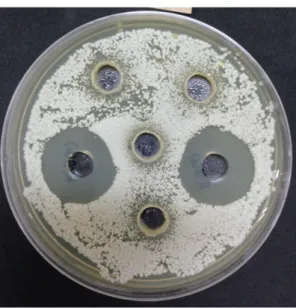
E XTRACTION OF METABOLITES FROM A CTINOMYCETES
C ONCENTRATION OF THE CRUDE EXTRACT
E VALUATION OF ANTIFUNGAL ACTIVITY
M INIMUM I NHIBITORY C ONCENTRATION (MIC)
The yeast isolates used in this work were selected for the presence of virulence factors. To find out whether the actinomycete strains actually had the ability to inhibit the growth of the yeasts, the diffusion method in agar wells was performed using only the centrifuged extract produced by the actinomycetes. Comparing the inhibition results obtained with the centrifuged and crude extracts of R18(6) isolate in these two tables, we can clearly see that the inhibition was greater when using the centrifuged extract.
Two hypotheses can be made about this result: one is that there were still cells in the centrifuged extract that could produce the secondary metabolite and had greater inhibition; the other is that the metabolite produced by R18(6), which inhibits yeast, is more than one synergistic compound and one of them is lost in the extraction process. For this isolate, the crude extract showed greater inhibition compared to the centrifuged extract. Some yeast isolates that did not form halos in the agar well diffusion method were inhibited at higher concentrations by the extracts in the MIC test.
It could be explained because the extract concentration in the medium after its diffusion was not as high as the concentrations tested in the MIC assay, it was more of an indirect activity, which is different from when the extract was put in directly. This was the case with 2C5 - isolate, it did not form halos when tested against 6(4) and 6(2) centrifuged extracts, but it was inhibited by the same extracts in the MIC test at higher concentrations. On the other hand, when comparing the results of the two different tests performed with the R18(6) extract, the two yeast isolates that did not form halos in agar plates, (2)2B10 and (2)2C8, also grew well in each The MIC test.
When tested against R18(6) it showed significantly greater inhibition, it did not grow even in the lowest extract concentration. Hawser and Islam (1999) investigated laboratory and clinical yeast strains against fungistatic and fungicidal antifungal agents and propose a morphogenic transformation assay, which will greatly aid in the characterization of new antifungal agents and can better distinguish fungicidal from fungistatic action. The aim of this study was to evaluate the activity of compounds produced by Streptomyces isolates against yeasts from the aquatic environment, and we could conclude that the extracts have antifungal activity against most of the strains tested.
Further studies would be important to learn more about the extracts tested in this work, as they may inhibit yeast strains that have shown resistance to some of the antifungals used. Antifungal agents commonly used in the treatment of superficial and mucosal candidiasis: mode of action and development of resistance. Environmental assessment of watercourses of the Turvo Limpo river basin in the state of Minas Gerais, Brazil.
